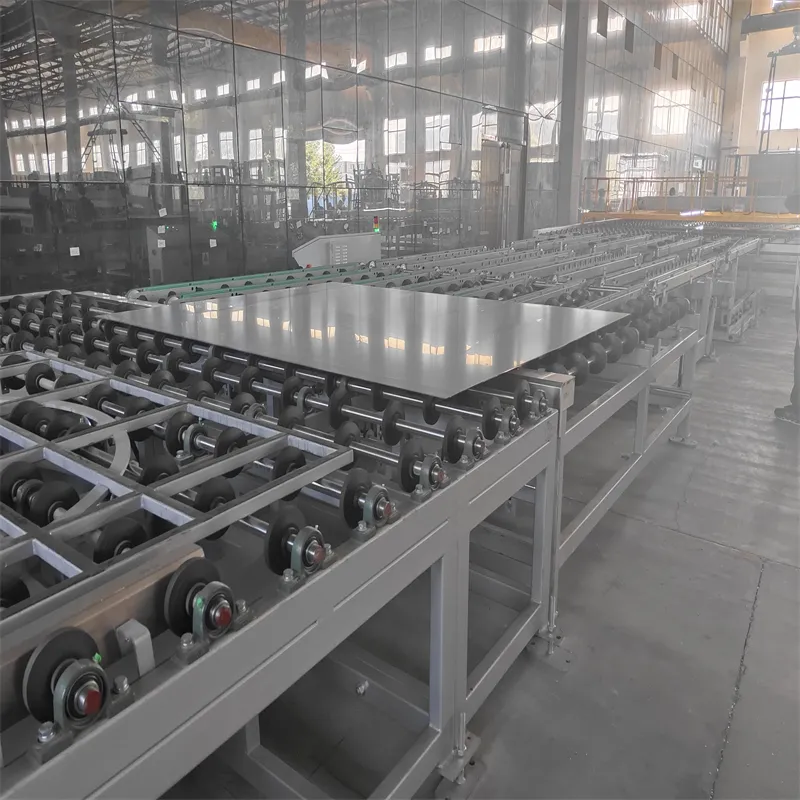Oct . 21, 2024 16:26 Back to list
curved laminated glass
Curved Laminated Glass A Blend of Aesthetics and Functionality
Curved laminated glass has emerged as a popular choice in modern architecture and design, offering a unique combination of beauty, safety, and versatility. This innovative material not only enhances the aesthetic appeal of buildings but also provides essential structural benefits, making it an integral component in contemporary construction.
Laminated glass is created by sandwiching a layer of polyvinyl butyral (PVB) or another interlayer between two or more layers of glass. This process not only bolsters the structural integrity of the glass but also enhances its safety features. In the event of a breakage, the interlayer holds the shards together, preventing injuries and maintaining the glass's overall integrity. When this laminated glass is curved, it allows architects and designers to create flowing, organic shapes that defy traditional straight-line design.
One of the primary advantages of curved laminated glass is its versatility in applications. It can be used in a variety of architectural elements, including facades, skylights, windows, and balustrades. The ability to curve the glass opens up new possibilities for innovative design, allowing for more fluid lines and dynamic forms that can dramatically alter the appearance of a building. This is particularly evident in high-rise structures and public spaces, where curved glass facades can create visually stunning exteriors that reflect sunlight and interact with their surroundings.
curved laminated glass

Moreover, the use of curved laminated glass can contribute to energy efficiency
. By allowing natural light to flow into interior spaces while minimizing glare, it helps reduce reliance on artificial lighting, thereby lowering energy consumption. Many manufacturers also offer glass options with various coatings that enhance energy performance, such as low-emissivity (Low-E) coatings, which help maintain indoor temperatures and increase overall energy efficiency.Safety is another critical aspect of curved laminated glass. In addition to providing structural support, the laminated layer significantly reduces the risk of shattering. This feature is particularly valuable in high-traffic areas where safety is paramount. Furthermore, it can help mitigate against extreme weather conditions, UV radiation, and even sound transmission, making it an excellent choice for various environments.
As architectural trends continue to lean towards sustainability and innovation, curved laminated glass is becoming increasingly relevant. Designers are drawn to its aesthetic potential and the functional benefits it offers, allowing for a harmonious blend of form and function. With advancements in glass manufacturing technology, the possibilities for customization and application are expanding, paving the way for even more breathtaking architectural feats.
In conclusion, curved laminated glass represents a significant evolution in building materials, redefining how architects and designers approach their projects. Its aesthetic appeal, coupled with safety and energy efficiency, positions it as a key player in the future of architectural design. As we move forward, we can expect to see more innovative uses of this versatile material, further transforming our urban landscapes into works of art.
-
Safety and Style with Premium Laminated Glass Solutions
NewsJun.24,2025
-
Reinvents Security with Premium Wired Glass
NewsJun.24,2025
-
Premium Float Glass Line for Modern Architecture
NewsJun.24,2025
-
Low Emissivity Glass for Energy-Efficient Architecture
NewsJun.24,2025
-
High-Performance Insulated Glass Solutions for Modern Architecture
NewsJun.24,2025
-
Elevates Interior Style with Premium Silver Mirror
NewsJun.24,2025
Related PRODUCTS














